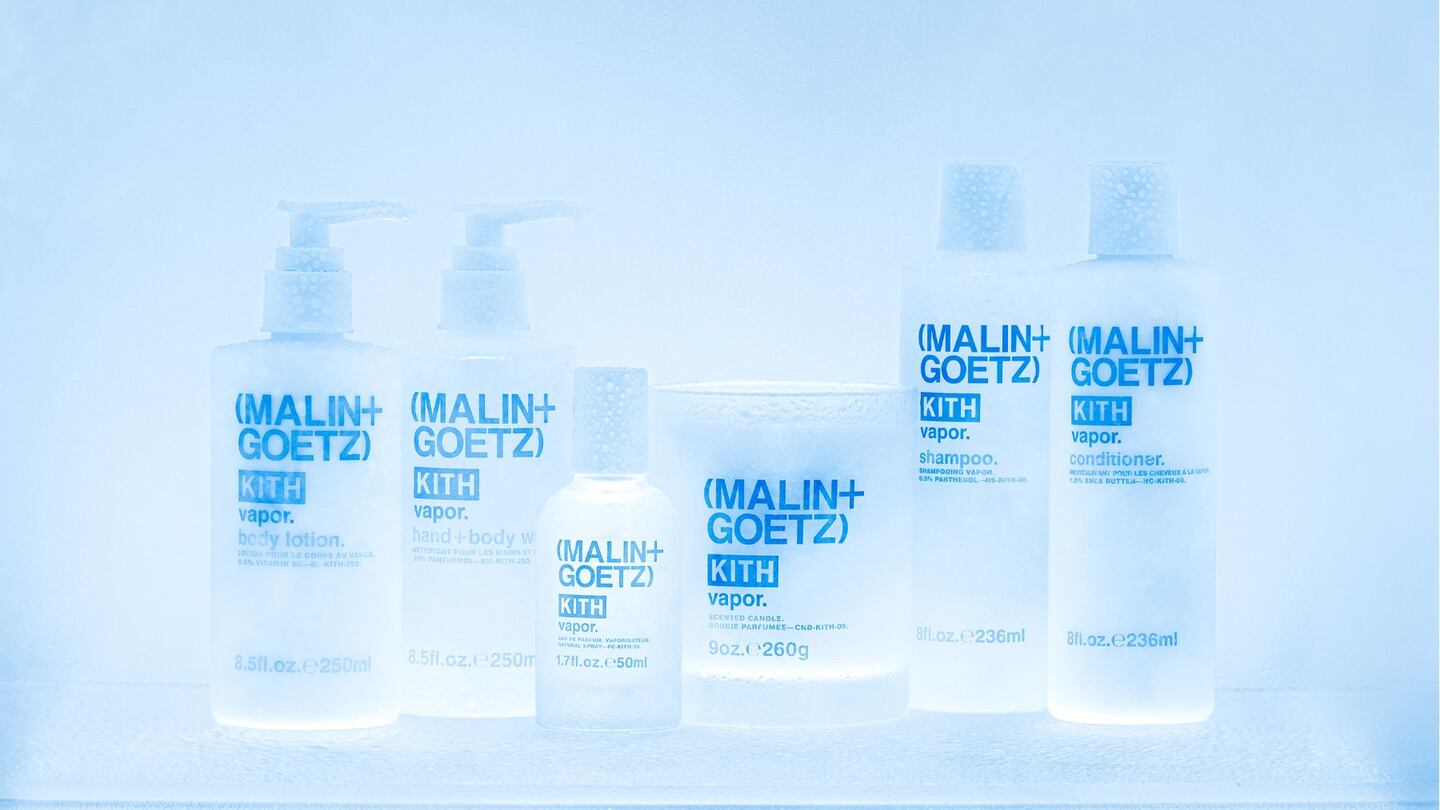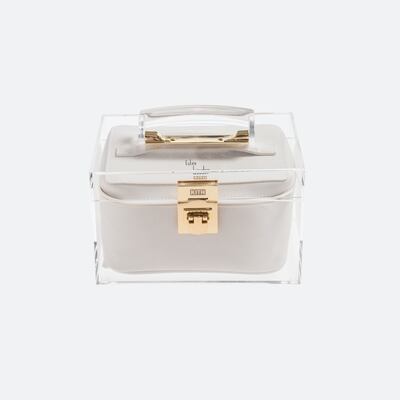
The Business of Fashion
Agenda-setting intelligence, analysis and advice for the global fashion community.

Agenda-setting intelligence, analysis and advice for the global fashion community.

Welcome to BoF's Beauty Newsletter, featuring members-only analysis and the week's top news from the front lines of the global beauty business. Subscribe here.
NEW YORK, United States — This summer, a beauty industry insider developed a new hobby: snapping photos of the seemingly permanent line outside the Glossier store in Soho. Week after week, she documented people patiently waiting, rain or shine, for their chance to buy Boy Brow and Milky Jelly Cleanser.
“When it was done pouring, the line still extended down Lafayette [Street] — but with Glossier umbrellas,” read one dispatch, sent to a group chat.
This scene outside Glossier may be surprising in the beauty world, but fans of Off-White, Supreme, Heron Preston and other streetwear labels wouldn't bat an eye at lines around the corner ahead of the latest drop. As sneakers, hoodies and logo T-shirts have hit the mainstream, so have streetwear's strategy of frequent, limited releases, with even traditional luxury brands like Burberry and Balenciaga embracing the trend.
ADVERTISEMENT
In 2005, MAC Cosmetics was one of the first to dabble in streetwear when it partnered with A Bathing Ape on a cosmetics filled camouflage pouch. Last year, Off-White and Byredo put out a fragrance and hair perfume collaboration, "Elevator Music," that Virgil Abloh described at the time as a "nondescript description of a space for us to be creative."
But overall, beauty brands have been slower to take their cues from streetwear. How many times has there been a line outside of Sephora because Huda Beauty or Pat McGrath Labs dropped a new palette? Fenty Beauty remains the biggest draw at the specialty retailer, as well as a mega sales driver, but it has yet to attract the crowds a sneaker release could. Whether it's because the products are too widely available or the launches too frequent, one thing is for certain: Glossier, with its lines out the door that echo the permanent crowd outside Supreme's store a few blocks away, is one of the few beauty names to even come close to cracking the code.
“They [Glossier] have the same hype and demand streetwear does [when there’s] a limited collaboration… [It] really feels like a sneaker release,” said Emily Oberg, an influencer and founder of Sport & Rich, a line of apparel and accessories, who called Glossier the sole “hype” brand in beauty.
More beauty brands are waking up to the buying power of hypebeasts, viewing a collaboration with a well-known streetwear name as the key to attracting younger customers.
In March, Estée Lauder repackaged some of its bestselling skincare with vintage logos, housed them in a PVC case with luxe gold hardware for a limited run at Kith, a purveyor of streetwear that counts Def Jam Records and Barbie as its latest design collaborations. Stephane de La Faverie, global brand president of Estée Lauder, told BoF the products sold out in under three minutes.

Kith and Esteé Lauder's collaboration | Source: Courtesy
Earlier this month, Kith released a six-piece “Vapor” collection with Malin + Goetz. In addition to updated packaging, the 15-year-old grooming line concocted a “conceptual” fragrance inspired by the “concrete jungle” to “[make] it feel Kith,” said Matthew Malin, Malin + Goetz’s co-founder. Otherwise, the products for sale are drawn from items Malin + Goetz has sold for years.
Mary H.K. Choi, a lifestyle and culture reporter, doesn’t think there will be a “streetwear brand of beauty,” in part because cosmetics expire, limiting their resale value (vintage Nikes and rare Supreme merchandise can sell for thousands of dollars online, adding to those brands’ hype).
ADVERTISEMENT
But beauty has plenty to learn from streetwear, she added. The key, she explained, is for brands to have the same "framing" that's historically made streetwear so attractive — which is that you have to be "in the know" to even know what "it" is in the first place. She pointed to Glossier founder Emily Weiss, who seeded a wide range of products, including apparel, to influential people before the line launched. This planted the idea in consumers' minds that Glossier was a lifestyle brand, even before Weiss knew what she'd actually sell.
“It’s all marketing,” Oberg said. “There’s hype because of the marketing, it’s not necessarily because the product is good.”
Hype aside, limited-edition drops and collaborations are transforming customer perceptions of beauty brands. The five-piece, $145 Kith Women X Estée Lauder Skincare Kit wasn’t restocked after it sold out. By contrast, when Kylie Cosmetics or KKW Beauty products sell out, the brands rush to make more product and restock as soon as possible.
“Consumers are demanding this kind of … drop strategy … this scarcity factor of launching a collectors’ items,” Lauder’s De La Faverie said.
Beauty products are being “collected” as a mark of taste and status, rather than purchased as a necessity to be consumed.
There's hype because of the marketing, it's not necessarily because the product is good.
“What’s sexy about it is the content creation, the experientialisation of a beauty brand,” said Shireen Jiwan, founder of Sleuth Brand Consulting.
Jiwan believes beauty borrowing from street culture is a slice of a broader movement.
Everyone is in the business of self-expression, quick to position their company as a “lifestyle brand,” she noted, a departure from a more siloed time when one could only play in one category. A recent, unexpected example (outside of the beauty space) is GQ’s furniture and homeware collaboration with CB2 that bowed in August.
ADVERTISEMENT
“That’s one set of boundaries that’s falling. What category are you in? It doesn’t really matter anymore,” Jiwan said. “The other boundary that’s falling is what constitutes a designer, who’s an expert. It doesn’t really matter anymore.”
Generational boundaries are falling, too. Some of the most successful names in streetwear are really young, Jiwal pointed out, and they're selling at price points that are on par with luxury products, including Heron Preston's $650 denim jackets and Fear of God's nearly $1,100 cargo pants.
The other boundary that's falling is what constitutes a designer, who's an expert. It doesn't really matter anymore.
But Choi insisted that brand loyalty, a pillar of “what makes anything streetwear,” isn’t just about the most expensive or exclusive item. This especially holds true when it comes to beauty, where Glossier’s bestselling Boy Brow retails for $16.
“It’s signalling your lifestyle, and that’s the new hot shit model because of the new age of transparency as it relates to celebrity,” she added. “The fact that you can see your favourite Euphoria star using Glossier and it all feels so BTS [behind the scenes] — it’s because aspiration has changed.”
Most importantly, Glossier doesn’t lose any of the “cool” the bigger it gets, said Choi, even with a valuation of $1.2 billion. What’s more hype than that?
THIS WEEK IN BEAUTY
Victoria Beckham's beauty line is here. Victoria Beckham Beauty is a direct to consumer brand that launched with an 11-piece smoky eye collection.
Benefit Cosmetics has a new chief executive. Christie Fleischer, who comes from Netflix, will run the LVMH-owned beauty label.
Blue Mercury founders to exit company. Barry and Marla Beck are parting ways with the retailer they founded in 1999, four years after being acquired by Macy's.
Eos is partnering with TikTok. The brand, which quadrupled its media spend year over year, is the latest to link up with the app, a favourite among Gen Z's and young millennials.
Instagram has a new "canvas" of beauty. Inner eye beauty, including high-res, zoomed in pictures of eyeballs, are growing in popularity on the social platform.
Pollution is good for business. L'Oréal chief executive and chairman Jean-Paul Agon said pollution helps sell more beauty products.
The beauty at London Fashion Week was memorable. Key trends included hair and makeup inspired by 90's rave culture, deep side parts and braids.
These are the winners of L'Oréal USA's accelerator program. Rosebud AI, an augmented reality company; Seknd, a skincare discovery platform and Baalm, a skincare membership program.
From analysis of the global fashion and beauty industries to career and personal advice, BoF’s founder and CEO, Imran Amed, will be answering your questions on Sunday, February 18, 2024 during London Fashion Week.
The State of Fashion 2024 breaks down the 10 themes that will define the industry in the year ahead.
Imran Amed reviews the most important fashion stories of the year and shares his predictions on what this means for the industry in 2024.
After three days of inspiring talks, guests closed out BoF’s gathering for big thinkers with a black tie gala followed by an intimate performance from Rita Ora — guest starring Billy Porter.